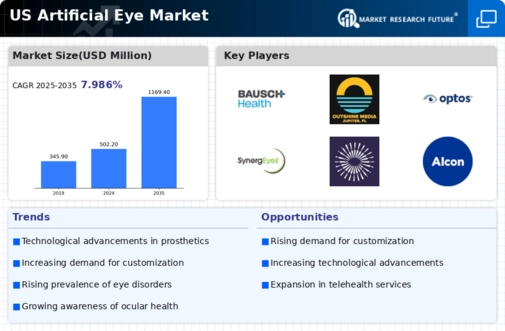The US Artificial Eye Market is characterized by a competitive landscape that is evolving rapidly, driven by technological advancements, an aging population, and increasing awareness about ocular health. The market has seen a surge in the development and adoption of innovative products designed to enhance the quality of life for individuals with visual impairments and eye-related conditions. Competitive dynamics are influenced by various factors, including product performance, pricing strategies, distribution channels, and the ability of companies to differentiate their offerings.
Firms operating in this market continuously strive to improve their product portfolios and invest in R&D to stay ahead of competitors and better meet clinical demands.
Bausch Health has established a significant presence within the US Artificial Eye Market, leveraging its strong portfolio of vision care products and technologies. The company has a reputation for innovation and quality, which is evident in the effectiveness and reliability of its artificial eye solutions. One of its notable strengths is a well-defined strategy that focuses on enhancing patient care and satisfaction through improved product offerings. Additionally, Bausch Health benefits from a strong distribution network, ensuring that its products reach healthcare providers and patients effectively.
The company's commitment to ongoing research and development helps maintain its competitive edge, making it a prominent player in the market.
Carl Zeiss AG has also made considerable inroads into the US Artificial Eye Market, known for its commitment to precision and technological excellence in optical products. The company offers a variety of advanced solutions, including artificial eyes that cater to the unique needs of visually impaired patients. Zeiss emphasizes high-quality materials and innovative design in its products, which has helped build strong brand loyalty among practitioners and patients alike. Its strengths include a robust research and development pipeline, ensuring that the company remains at the forefront of technological advancements in ocular health.
Additionally, Carl Zeiss AG has engaged in strategic mergers and acquisitions that have bolstered its market position, expanding its capabilities and reach within the US, further consolidating its influence in the artificial eye segment.







